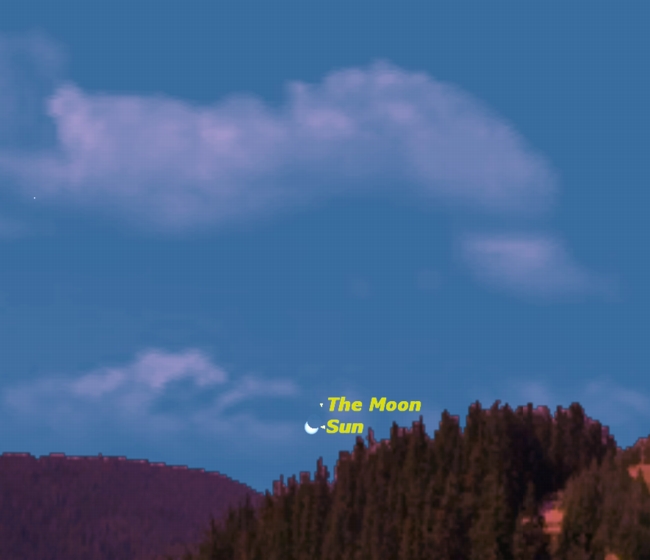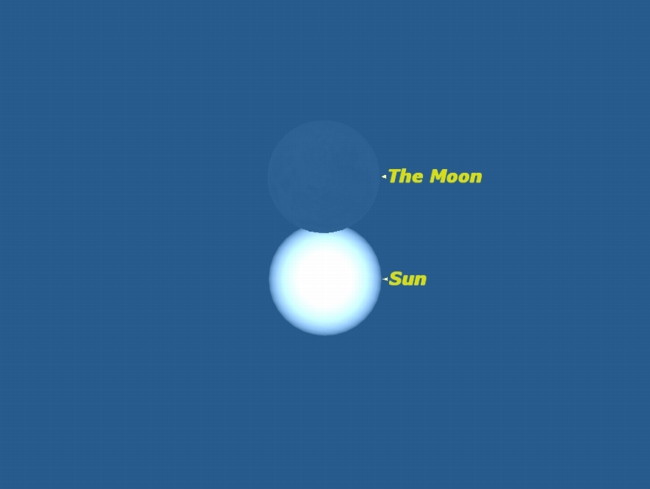Rare Triple Sky Treat: Lunar, Solar Eclipses in June and July

Over the next month, the world will experience three eclipses: two partial solar eclipses a month apart and one total lunar eclipse exactly in between, and it all starts with a so-called "midnight" eclipse of the sun.
A solar eclipse at midnight? How is such a thing possible?
It can happen near midsummer in the high Arctic, the land of the midnight sun. And it will happen this week on June 1 and 2, visible in the northernmost reaches of North America, Europe, and Asia. [Photos: The First Solar Eclipse of 2011]
These two solar eclipse sky maps available here detail what observers could see during some of the upcoming eclipses of the sun and moon in June.
'Midnight' solar eclipse of June 2
The eclipse begins on Thursday, June 2, at dawn in northern China and Siberia, then moves across the Arctic, crossing the International Date Line and ending in the early evening of Wednesday, June 1, in northeastern Canada. [2011 Solar and Lunar Eclipse Skywatching Guide]
That’s right: The eclipse begins on Thursday and ends on Wednesday because of the International Date Line. Because observers in northern Russia and Scandinavia will be observing it over the North Pole, they will actually see it in what is, for them, the middle of the night of June 1 and 2.
Get the Space.com Newsletter
Breaking space news, the latest updates on rocket launches, skywatching events and more!
Solar eclipse no one will see on July 1

Exactly a month later, on Friday, July 1, an equally bizarre eclipse will occur in the Antarctic.
Because this is the southern winter, the sun will be below the horizon for almost all of Antarctica, except for a small uninhabited stretch of coast due south of Madagascar. The only place the eclipse will clear the horizon will be in a small area of the Southern Ocean, far to the south of South Africa. [Solar Eclipse Photos: The View From Space]
Chances are that this eclipse will be witnessed only by penguins and sea birds.
Lunar Eclipse of June 15
Exactly halfway in between these two partial solar eclipses, there will be a total eclipse of the moon on Wednesday, June 15. [Blood Red Moon: 2010's Total Lunar Eclipse]
The eclipse will be visible for millions of people in Africa, the Middle East and southwestern Asia. It will be visible as the moon rises in the early evening in South America and Europe, and as the moon sets before dawn in eastern Asia and Australia.
Unfortunately, it will not be visible anywhere at all in North America.
This article was provided to SPACE.com by Starry Night Education, the leader in space science curriculum solutions. Follow Starry Night on Twitter @StarryNightEdu.
Join our Space Forums to keep talking space on the latest missions, night sky and more! And if you have a news tip, correction or comment, let us know at: community@space.com.

Geoff Gaherty was Space.com's Night Sky columnist and in partnership with Starry Night software and a dedicated amateur astronomer who sought to share the wonders of the night sky with the world. Based in Canada, Geoff studied mathematics and physics at McGill University and earned a Ph.D. in anthropology from the University of Toronto, all while pursuing a passion for the night sky and serving as an astronomy communicator. He credited a partial solar eclipse observed in 1946 (at age 5) and his 1957 sighting of the Comet Arend-Roland as a teenager for sparking his interest in amateur astronomy. In 2008, Geoff won the Chant Medal from the Royal Astronomical Society of Canada, an award given to a Canadian amateur astronomer in recognition of their lifetime achievements. Sadly, Geoff passed away July 7, 2016 due to complications from a kidney transplant, but his legacy continues at Starry Night.










